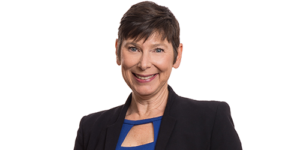Opening Up to a Growth Mindset
Stanford psychology professor, Carol Dweck, introduced the education world to the concept of a growth vs. a fixed orientation to learning through her 2006 book Mindset. What began in the 1970s as a study of how school children coped with failures and setbacks, Dweck observed that many of the children facing a daunting task would self-determine their ability to be successful before completing the difficult assignment. In anticipation of their “failure”, they would cite “it is too hard”, “I can’t do this and I’m never going to be good at this”, or “I give up”. Dweck also observed a smaller segment of children who approached difficult work with what she soon labeled a growth mindset. Students in this group approached the challenge before them with curiosity and an openness to take some risks. Common responses from these children included: “mistakes help me learn”, “what am I missing?”, and “I will learn how to do this”.
I have a dear friend from high school who teaches an entry-level computer engineering course to incoming freshmen at a small liberal arts college in Pennsylvania. She shares that every fall, a new group of very bright students comes into her class and many quickly become frustrated that they are not able to “get it” right away. Understanding that some of their frustration is born out of a fixed view, she began to encourage some risk-taking and openness to new ideas through modeling what a growth mindset looks like. She does this each new semester by demonstrating how a leader can influence others by taking on a new and foreign skillset alongside her students. As her freshmen are learning the basics of computer engineering she publicly takes on the task of learning a new skill, as well. In over two decades, she has taught herself (along with a boost from YouTube tutorials) how to crochet, play the dulcimer, write calligraphy, and rollerblade. All along her learning journey, she shares with her students how shifting from avoiding challenges to taking them head-on and persevering has helped her learn and grow in ways she never expected…and as her friend, I am the proud owner of multiple handmade doilies and ski caps, as a result.
So what is the difference between growth and fixed and how does that difference translate to adults in the workplace? It comes down to whether we believe we can learn, adapt and grow our knowledge and our behaviors; or, we see our situation as unchangeable. This fixed view can be paralyzing. Our fear of failure inhibits our ability to learn new skills, take on unfamiliar tasks and experience our true growth potential.
You can influence your corporate culture by promoting a healthy environment that fosters a growth mindset among your teammates. Recognize the difference between setting performance goals and developmental goals. Often, performance-related goals are closely tied to skills your employee may have already mastered. Developmental goals challenge them to tackle new skills and gives them time to learn and demonstrate their new proficiency!
Hire people who embrace a challenge and are eager to grow, instead of relying solely on a long pedigree of degrees and credentials. Employers are finding value in looking beyond what is stated on a resume and placing stock on potential vs. pattern. Join us for our next Experience Series when we convene a panel of experts on the power of developing a growth mindset, understanding Emotional Intelligence, and enhancing a culture of workplace collaboration.
